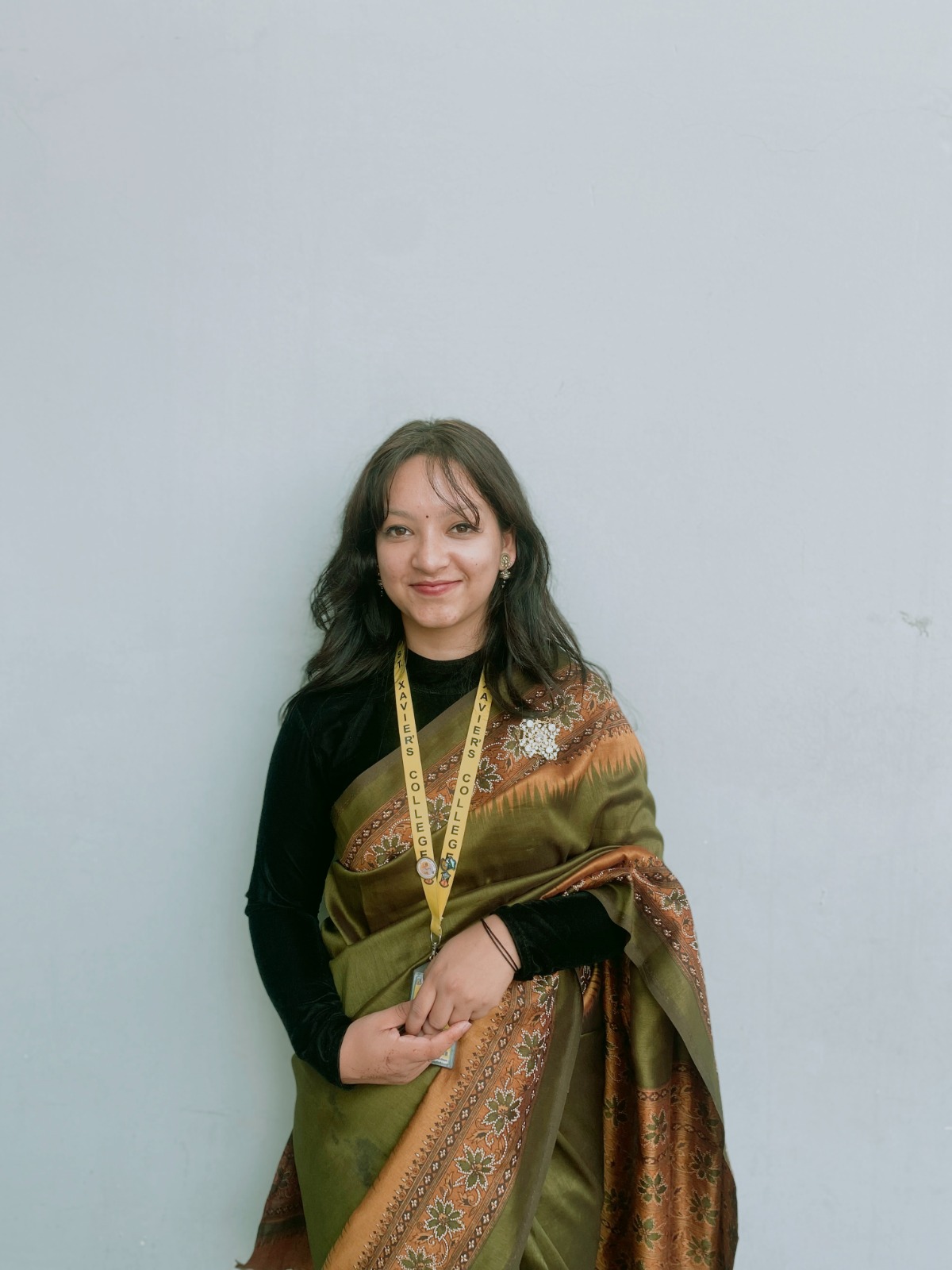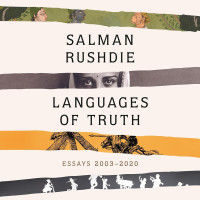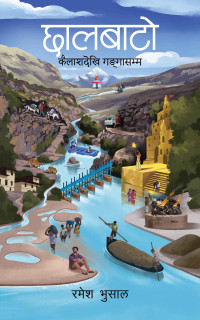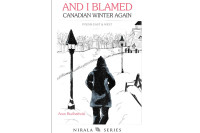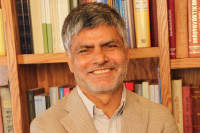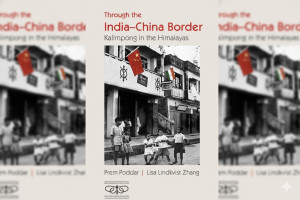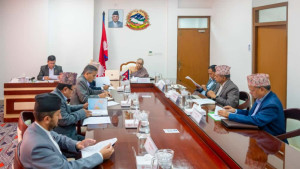Books
Literature today is like a flower in a vase, beautiful but scentless
Madan Puraskar laureate and essayist Yubaraj Nayaghare discusses his travels and contemporary Nepali literature.
Aarya Chand
Yubaraj Nayaghare is a Nepali writer and essayist known for his travelogues and subjective essays. Born in Ilam in 1969, he started writing poetry at age ten and has since published 22 books, including the essay collection ‘Ek Haatko Taali’ (2009).
His writings often explore social issues, identity, and cultural diversity, enriched by his extensive travels across Nepal. Notably, Nayaghare has visited all 77 districts of the country twice, which deeply informs his work and perspective.
In this conversation with the Post’s Aarya Chand, Nayaghare shares insights into his writing process and his observations on contemporary Nepali society.
Do people read essays and travelogues in Nepal, or buy them to support the writer? What kind of feedback have you received from readers?
Not just in Nepal, reading habits have shifted globally, influenced by social media and constant distractions. There was a time when people would fall asleep reading, but now that focus is harder to maintain. Still, reading hasn’t disappeared. I’ve observed that people above 40 engage more deeply with books than younger people.
People buy books not just for social reasons or to support writers. The book market is growing steadily. New bookstores are opening, and online platforms are more active. What stands out is how Nepali literature is gaining ground abroad. In the past, people used to send items like cassettes or gundruk overseas—now, it’s books. Sending literature through couriers has become common, and many Nepalis living abroad are interested in new releases. Their curiosity has helped reshape the market.
Over the years, I’ve received meaningful feedback. I’ve written 11 subjective essays and 11 travelogues. Some readers have visited places I’ve described—Rara, Shey Phoksundo, Upper Dolpo—and shared their experiences. Often, they say it felt different from how I portrayed it. For me, if someone reads about a place where I’ve walked through pain and effort, and they decide to go and experience it themselves, that’s the biggest reward for a writer. And that’s something I’ve been fortunate to witness.
How do you sustain yourself as a full-time writer in Nepal?
I’m not sure how, but all my books have been reprinted so far, and I’ve had chances to travel within and outside Nepal. Sometimes people have supported me by buying travel tickets—by bus or plane—which has helped me keep going. Indeed, living entirely off writing isn’t easy, but what comes with it is a certain sense of self-respect and a simple way of life. I don’t have any other source of income. I started writing during my college years, and I’ve continued since then.
Your recent book ‘Aagoko Biu’ (2024) shifts focus from travel writing to reflections. What led you to write it?
My recent book reflects a shift in my writing. Though I’ve written travelogues for years, people mostly know me for subjective essays.
Over time, I realised I had focused on travelling more and writing fewer essays. During my journeys, I observed that people often have concerns ready on the tip of their tongues, prepared to voice them immediately. There is little room to accept others’ realities. On topics like caste, politics, and language, people are quick to oppose rather than seek solutions, fueling conflict instead of calming it.
This made me reflect: Why has society become so reactive? I recalled a village practice of keeping a ‘seed of fire’—an ember carefully preserved to start a new fire quickly. That image made me think about how people are only willing to light a fire rather than extinguish it, and it led me to consider: What if we supported and eased each other’s struggles? This idea shaped my writing on today’s social issues, aiming to encourage support and understanding rather than division.
What draws you to essays and travelogues, and how do you decide which form suits an idea or experience?
For me, it works like this: when something feels heavy, complicated, emotional, or thought-provoking, I write it as a subjective essay. But if that same experience comes through travel or interaction with nature, it often becomes a travelogue. Many times, travel gives me the material for both forms. After the Royal Massacre incident, I didn’t feel like staying in Kathmandu, so I went to Syabrubesi and Dhunche. I visited a village hit by a flood and wrote the essay ‘Syaphru Lai Salam’.
Later, I connected that same experience to how different aspects of Nepali society—like politics, economy, or even relationships with neighbouring countries—also feel like they’ve been flooded or overwhelmed, and from that came ‘Pahira Ko Dhaba’.
So, it’s not that I always choose the form first; often, the experience leads the way and takes the shape it needs to.
Your essay collection ‘Ek Haatko Taali’ won the Madan Puraskar in 2009. How did that make you feel?
The award recognised my writing style. Nepali essays hadn’t received the Madan Puraskar for 42 years—since Shankar Lamichhane’s ‘Chintan Pyaj’ in 1967. When ‘Ek Haatko Taali’ won, it felt like an acknowledgement of essays after a long gap during which stories and novels mainly were awarded.
Many books come from India to Nepal, but few Nepali books go abroad. How can Nepali literature be better promoted internationally, especially where Nepali speakers live?
The first step in promoting Nepali literature internationally, especially in places with Nepali-speaking populations, is government involvement. During my visit to Australia, I noticed Nepalis were the fourth largest group after Europeans, Chinese, and Indians. With such a significant population, the demand for Nepali literature exists. The government and cultural bodies should coordinate efforts, like organising large concerts, holding literary interaction sessions with Nepali readers, collaborating with universities, and inviting authors and experts for discussions.
Translation is another key step. Nepali literature should be translated not just into English, but also into regional languages of neighbouring countries like Assamese or Telugu, as we’ve often overlooked these. Literary festivals, workshops, and book fairs in cities like Sydney or Melbourne could help connect audiences and writers from both countries.
Another major gap is in sharing local stories internationally—like those of the Sherpas, yaks, or Himalayan culture—which remain underrepresented. Unlike global icons such as cowboys in Western media, these rich narratives haven’t been promoted enough. This is partly because only recently have more Nepalis moved abroad, and many with literary potential didn’t continue writing. We need to go beyond just English and use regional outreach to build identity and access new readers.
How has your writing style or themes changed over your career? Any key turning points?
Yes, my writing has changed over time, especially after the arrival of democracy in Nepal. Earlier, I wrote freely, without worrying about how people might respond. There was a kind of honesty and sharpness in those works. But today, a writer has to consider many layers—social, cultural, caste-related, gender-related—before even starting. Everything is sensitive, and that affects how we write.
In the past, reality-based stories and grounded experiences shaped literature. Now, there’s a constant concern about how something might be received or censored. That changes the tone and form of writing. Readers often ask me why my work isn’t as raw or bold as before. I tell them—now, even before you write a word, questions and doubts start forming.
Because of this, literature today often feels like a flower placed in a vase—visually appealing but without fragrance. It looks complete but doesn’t move or challenge the reader deeply. Earlier literature felt more alive, like food full of spice, layers, and taste. Now, it’s more cautious, and that caution has taken away some of the strength and directness that once defined Nepali literature. This shift, I feel, has made our literary landscape more restrained.
Yubaraj Nayaghare’s book recommendations
Mahabharata
Author: C Rajagopalachari
Publisher: Bharatiya Vidya Bhavan
Year: 1951
The ‘Mahabharata’ teaches us about life’s struggles, battles, diplomacy, and the greatness one can achieve through them all.
Tarun Tapasi
Author: Lekhnath Paudyal
Publisher: Sajha Prakashan
Year: 1953
Paudyal’s book explores the struggle between life and time, told in a captivating style that makes it a joyful read.
Alikhit
Author: Dhruba Chandra Gautam
Publisher: Sajha Prakashan
Year: 1983
This novel is a must-read to understand the cultures of the Awadhi, Maithili, and Bhojpuri communities.
Paila Agatma Tekera
Author: Krishnachandrasingh Pradhan
Publisher: Sajha Prakashan
Year: 1990
To examine Nepali society, we must learn about its culture, art, language, daily struggles, and political changes. This book helps us do so.
Kalyani Dharti
Translator: Tikaram Sharma
Publisher: Pairavi Book House
Year: 2017
Sharma describes 19th-century China so powerfully in Nepali, that I wonder how eloquently it was written in its original language.




 15.12°C Kathmandu
15.12°C Kathmandu